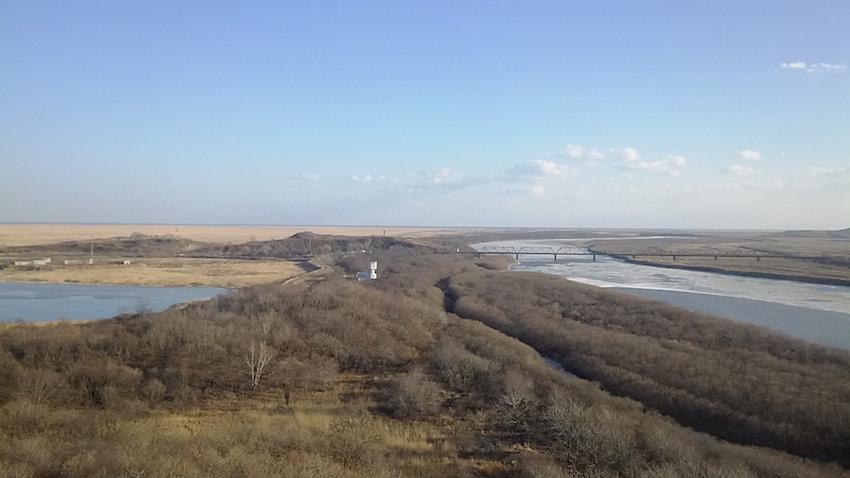
Few Chinese towns as small as Hunchun boast as many elegant Seoul-style coffee shops and stolid Russian restaurants at quite such close quarters, and in no other settlement this large along the Sino-Russian border do Han Chinese make up only around half of the local populace. In the south-easternmost corner of Jilin province’s Yanbian Korean Autonomous Prefecture, Hunchun lies sandwiched between Russia’s Primorskii Krai to the east and North Korea’s Rason Special Economic Zone to the south, at the head of a winding sliver of Chinese territory which tapers to a point just short of the Sea of Japan. Over the past two centuries cataclysmic political shifts sweeping Northeast Asia, have seen Hunchun assume many roles, from remote Manchu garrison to Chinese and Korean guerrilla base and closed frontier town, via periods under occupation from both Russian and Japanese armies. Waves of both domestic and cross-border migration have accompanied these dramatic political shifts with consequent demographic changes: today’s population comprises 52% Han Chinese, 38% Korean Chinese and 10% Manchu alongside both permanent and temporary Russian residents. As the fulcrum of the Sino-Russo-Korean ‘Tumen Triangle’, Hunchun today plays the role of focal point for China’s Northeast Asian developmental hopes, and a vessel for the disappointments which sometimes result.
Research
Aside from the inevitable allure of its good coffee, clean air and extraordinarily beautiful wooded natural surroundings, Hunchun’s long and complex history and contemporary importance to China’s regional ambitions make it a key site for examination of the Sino-Russian cross-border relationship with a deeper historical scope. As a permanent habitation and Qing defensive outpost long before the formation of the China-Russia border we know today, Hunchun is unusual in a region whose large population centres are mostly newer settlements. With its pre-Russian past, it thus serves as an intriguing barometer for the social transformations which shifts in the character and porosity of the border have brought about since it came into existence.
Yet Hunchun’s past and present have an equally formative third dimension, and a second border, owing to the town's location on China’s Korean frontier. At the very moment in the late nineteenth century which saw the new Russian presence nearby persuade the Manchu authorities to allow Han Chinese migration to the area, Koreans fleeing famine over the Tumen River were also arriving in great numbers and being permitted to settle the surrounding land. Such demographic defensive measures were too little too late, however, and Qing weakness was once again proven as anti-foreign unrest in China was seen by the neighbouring Tsarist authorities to be sufficient grounds for invading Hunchun in 1900, the occupation only ending after Russian military defeat to the Japanese in their War of 1904-5. The latter’s subsequent domination of both the Korean Peninsula and Manchuria saw Hunchun take on the occasionally jarring cosmopolitain character it retains today, uneasily accommodating everyone from Japanese colonial officials to Chinese farmers recently arrived from further south. Meanwhile bonds of revolutionary blood brotherhood were being formed in the surrounding woods as nascent Han and Korean Communist movements cut their teeth in anti-imperial skirmishes against the occupying Japanese, an echo of the partisan warfare which the Bolsheviks had waged against the Tsarist Whites less than two decades previously in taiga just to the east. In 1940 one Korean guerrilla leader named Kim Il Sung passed through Hunchun on his way to a five-year sojourn in the Soviet Union, only two years after a nearby outbreak of hostilities between Soviet and Japanese forces had spawned an ode whose Chinese translation is today one of only two Russian songs widely known in China.
Early in the twenty-first century, long-term residency reveals to the researcher that many of Hunchun’s formative historical influences remain palpable, from stories told by locals about growing up in an almost exclusively Korean town, to the squat blue hut which a century ago housed its customs office, and the town’s occasionally error-strewn trilingual shop signs. Yet mostly Hunchun and the narratives which surround it have an uncompromisingly future-oriented aspect. In 2015 Hunchun became the smallest place in China to serve as the terminus for a hugely expensive high-speed rail line, and the locally-focused developmental plans which both central and city governments promote for the town in the form of connections to Russia, the Koreas, Japan and beyond can sometimes seem wildly disproportionate to its modest size and past dealings with these sometimes problematic neighbours. Yet given that these plans feature millions of dollars more investment, a university campus, and myriad infrastructure projects from railways to nearby port facilities, what seems certain is that Hunchun will continue to serve as a bellwether for the wider national and international historical shifts which have played such an outsized role in this small town’s past.









